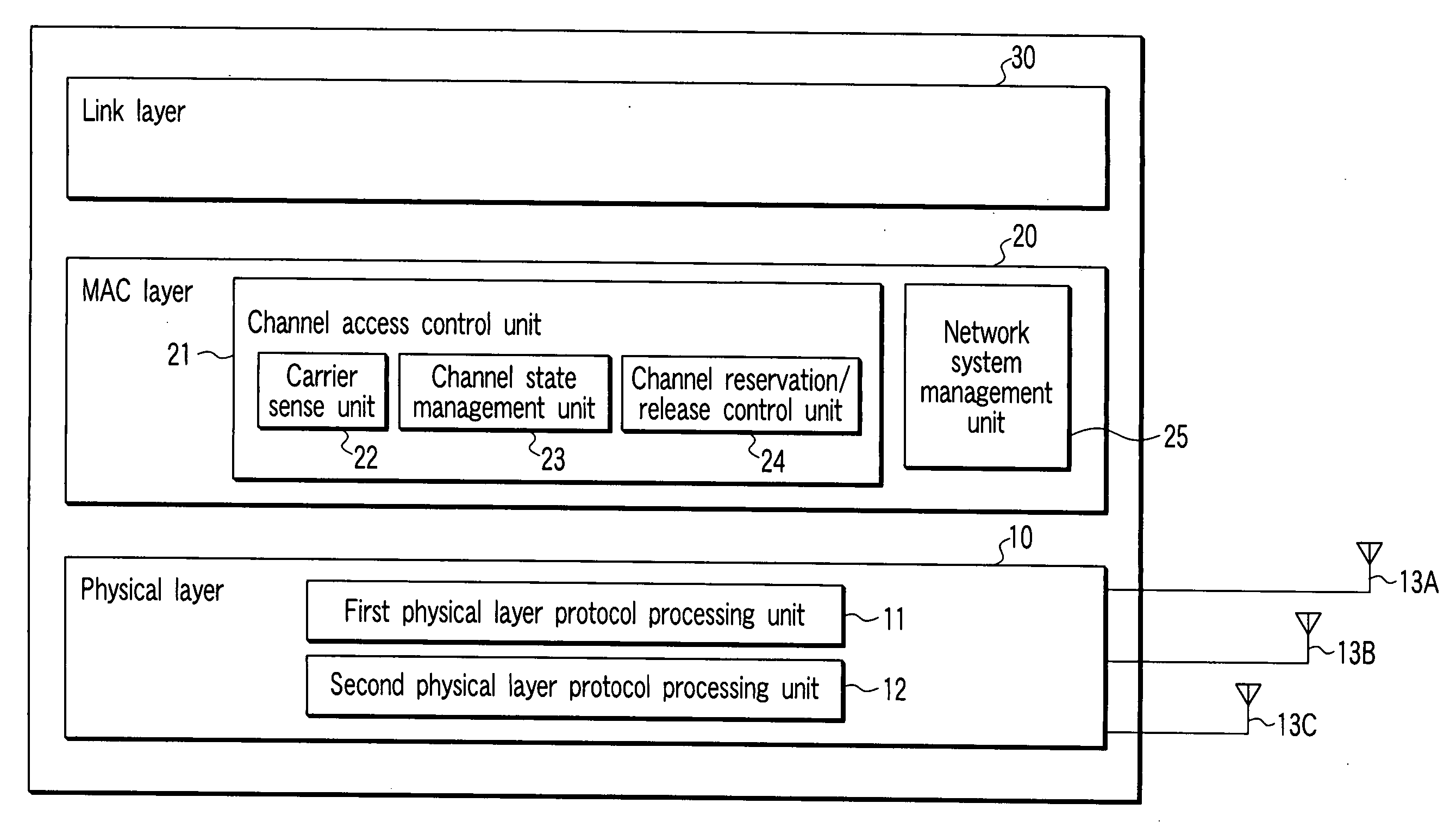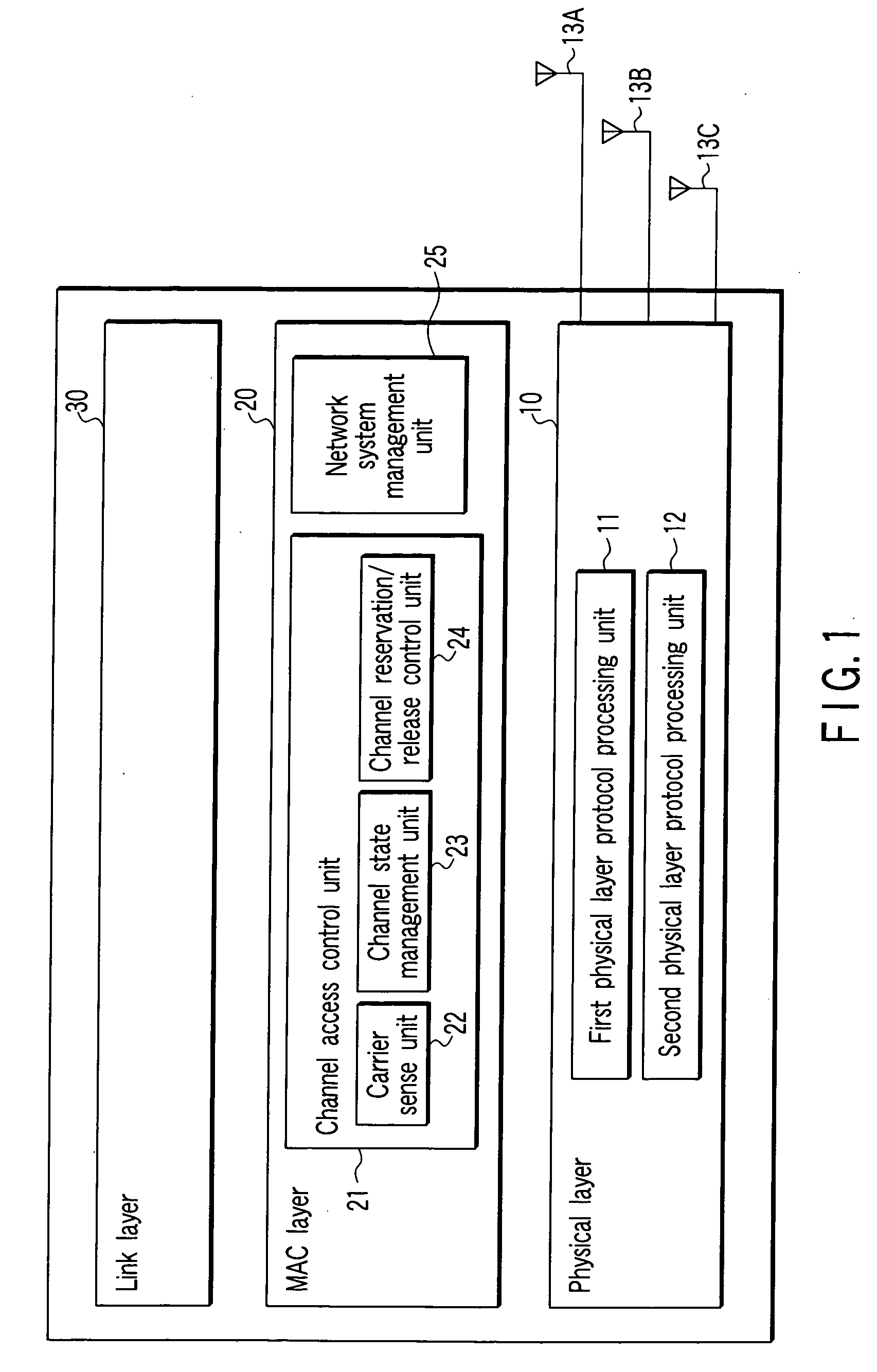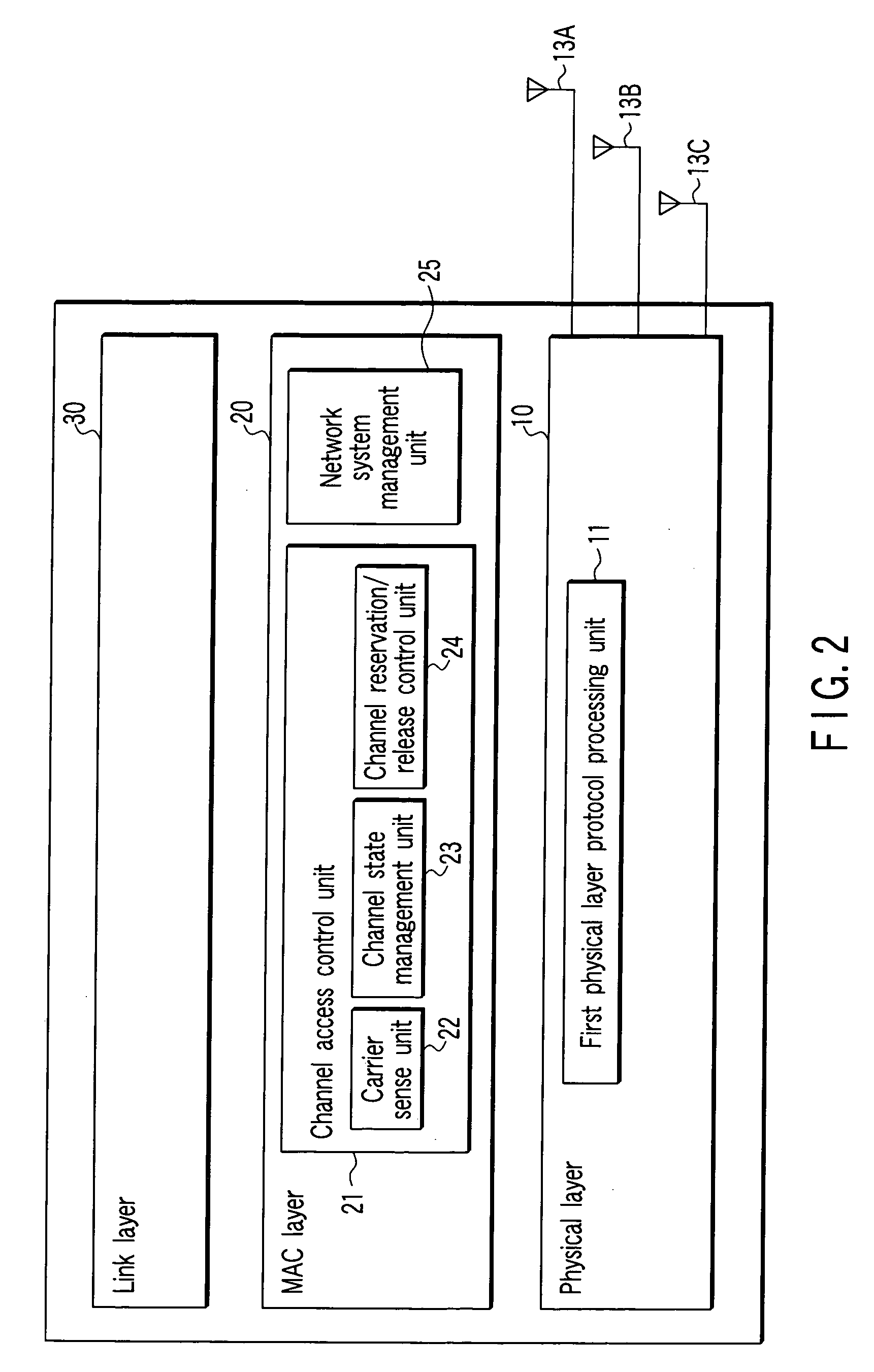Radio communication apparatus
a radio communication and apparatus technology, applied in the field of radio communication, can solve problems such as the likely deterioration of the entire system in throughpu
- Summary
- Abstract
- Description
- Claims
- Application Information
AI Technical Summary
Benefits of technology
Problems solved by technology
Method used
Image
Examples
first embodiment
[0031]FIG. 1 shows a configuration of a terminal according to the first embodiment. As shown in FIG. 1, a radio communication apparatus according to the first embodiment mainly comprises a PHY layer 10, a MAC layer 20 and a link layer 30. In FIG. 1, the PHY layer corresponds to two kinds of PHY layer protocols differing in frequency bandwidth of channels to be used. That is, the PHY 10 has a first PHY layer protocol processing unit 11 to perform PHY layer protocol processing for communicating by use of a first channel having a first communication bandwidth; and a second PHY layer protocol processing unit 12 to perform PHY layer protocol processing for communicating by use of a second channel having a second communication bandwidth. Practically, the first and the second processing units 11 and 12 frequently share a circuit therebetween and they are not always independent from each other.
[0032] The protocol to be processed by the first processing unit 11 includes at least the PHY lay...
second embodiment
[0085] Because a second embodiment is basically similar to the first embodiment, the second embodiment will be intensively described the point deferring from the first embodiment. The different point is that the first embodiment assumes to control the 20M_ch period and 40M_ch period depending on the number of the STAs but the second embodiment controls them by traffic amounts not by the number of the STAs.
[0086] The AP firstly collects information on a data amount stored in transmission queues of each STA. Here, we will describe the case of a wireless LAN system using the standard of IEEE 802.11e as an example. Each STA compliant with IEEE 802.11e standard describes size of transmission data (transmission queue size) actually stored in a QoS control field to transmit data frames. The AP collects sizes of the transmission queues from the data frames transmitted from each STA to grasp transmission data amounts stored in each STA.
third embodiment
[0098] Since a third embodiment is basically similar to the first embodiment, the third embodiment will be selectively described the point deferring from the first embodiment. The different point is that the first embodiment assumes to control the 20M_ch period and 40M_ch period depending on the number of the STAs but the third embodiment controls them by channel states. The channel state in the third embodiment means, for example, presence or absence of interference from other communications which are detected in scanning the channel state.
[0099]FIGS. 12A and 12B show examples of determining the time ratios between the 20M_ch period and 40M_ch period depending on channel states, respectively.
[0100]FIG. 12A shows the case in which the AP detects interference at a fixed cycle on the channel 20M_ch_b in channel scanning. Such an interference source is a radar. Assuming that the AP makes the 40 MHz communication using both the channels 20M_ch_a and 20M_ch_b during a period in which i...
PUM
 Login to View More
Login to View More Abstract
Description
Claims
Application Information
 Login to View More
Login to View More - R&D
- Intellectual Property
- Life Sciences
- Materials
- Tech Scout
- Unparalleled Data Quality
- Higher Quality Content
- 60% Fewer Hallucinations
Browse by: Latest US Patents, China's latest patents, Technical Efficacy Thesaurus, Application Domain, Technology Topic, Popular Technical Reports.
© 2025 PatSnap. All rights reserved.Legal|Privacy policy|Modern Slavery Act Transparency Statement|Sitemap|About US| Contact US: help@patsnap.com



